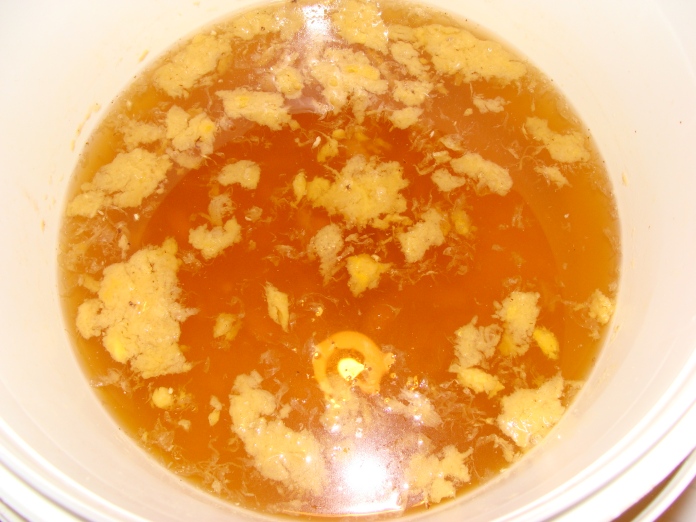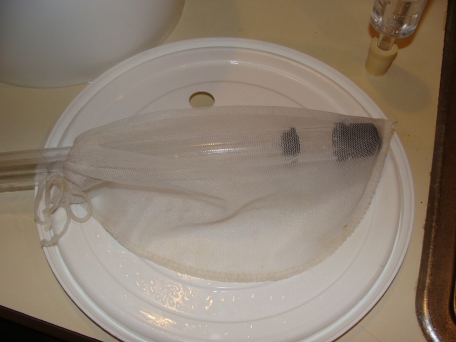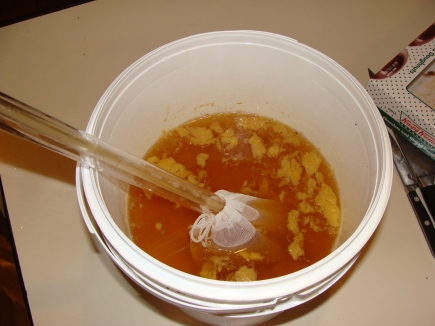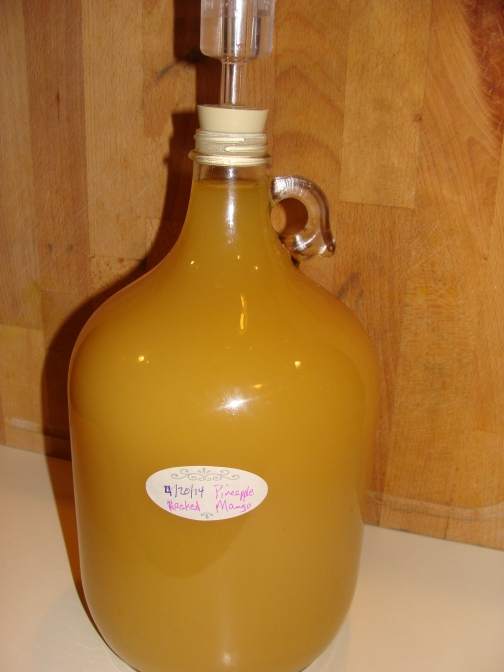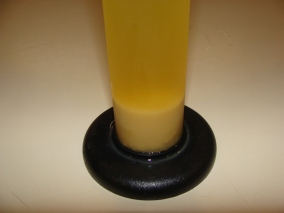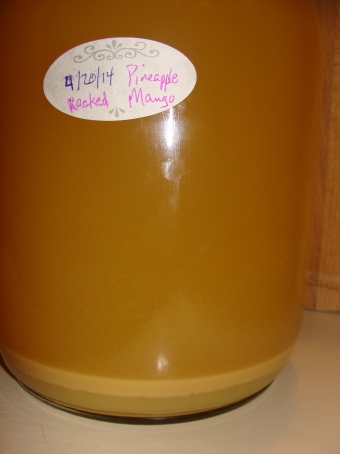
Cutting up a pineapple.
I had an exchange awhile back with a guy on an online forum and he introduced me to the idea of making a Tepache. I had never heard of it before. It’s pretty rustic. You ferment pineapple with raw sugar, cinnamon, cloves for a couple of days and then strain it and add water and a beer, ferment a couple of more days and then chill and serve. I grabbed a recipe off of Pinterest…I’m sure there are plenty of variations out there. This one called for:
1 fresh, ripe Pineapple, cut into chunks
8 cups of Water 20 oz Piloncillo (raw sugar). Brown Sugar is an acceptable substitute.
1 stick Cinnamon and 3 whole Cloves
Cover and leave in a warm place for 48 hours. Strain and add 1 cup of water and 1 beer. Let stand for 12 hours. Strain (Not sure why at this point…maybe it will become obvious or still seem redundant when I get to this point?). Add another cup of water and serve over ice. (I would chill it before putting it over ice.) Bottling? Probably not without pasteurizing it. Here’s the recipe I started with, for reference…giving credit where due! www.familyfoodandtravel.com/2013/12/tepache-pineapple-drink.html
I started into the recipe and cut up my pineapple. Since I have a fermentation bucket, I decided to use it, instead of a bowl or pitcher. And a lid with an airlock just seemed practical and safe.

Cut pineapple with water, cinnamon, cloves.
So I added the pineapple, water, cinnamon and cloves to the bucket and I headed to a local Mexican store for the Mexican raw sugar, Piloncillo.

Piloncillo…Mexican raw sugar.
When I went to check out, I spoke to the owner, who was working the register. He strongly advised using the pineapple skins and core only and to NOT use the flesh. “It’s no good.” he said. He was very helpful. So, I came home and drained my pineapple, peeled the skin and cut off the core from each piece and returned them to the bucket and I put the fruit in the refrigerator to eat later.

Piloncillo, weighed. (As close as I could get to 20 oz)

Pineapple skins only…use the flesh for something else!
The cloves, cinnamon stick and water went back into the bucket. I weighed out and added the piloncillo and stirred it around. It’s going to take awhile to dissolve, I guess, so I popped on the lid and airlock and will check on it later to stir and see that the sugar dissolves.

Ready to ferment…just need to get that sugar dissolved.
In a couple of days, strain, add some water and a beer, another 12 hours and done. Note that there is no added yeast in the recipe. There is also no campden tablet to kill off anything, so the fermentation will occur with whatever is “resident”. A little scary, but we are going to give it a shot. Now, for comparison, the Mexican store owner had a commercial bottled version on hand, so I bought a bottle. It isn’t alcoholic, but it should give me an idea of what I shooting for. I opened and poured the tepache into a beer glass. The flavor is pleasant and tastes of pineapple and brown sugar…no surprise there, I guess. It is, however, VERY sweet.

So sweet…needs beer!

A commercial version, “Tepachito”, non-alcoholic.
So, I drank half of it, grabbed a bottle of my American Wheat Citra Citrus and I topped off the glass. Voila!…did I just create Mateo’s Tepache Shandy? Why yes…yes I did! Anyway, still a tad sweet, but it’s much better. That’s it for tonight…now for the wait. But this is a shorter process than I’m used to. I should be drinking this batch this weekend!

Mateo’s Tepache Shandy!



























